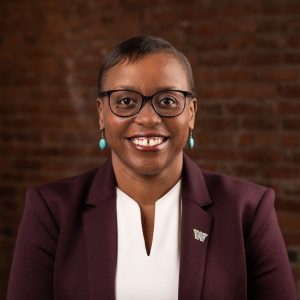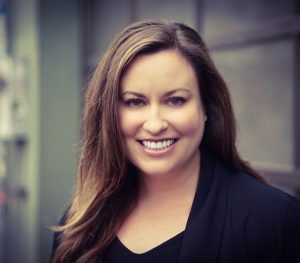Evans faculty Isabelle Cohen recently published an article in the Conversation, where she discussed an experiment she conducted in conjunction with the Uganda Revenue Authority to test a tax encouragement scheme in the form of reminder messages.
Category: Research Item
Alison Cullen helps strengthen EPA Science Advisory Board peer review process

In the news this past week was the work of the Environmental Protection Agency ‘s Science Advisory Board, which is chaired by the Daniel J. Evans Endowed Professor of Environmental Policy Alison Cullen. Professor Cullen and the Advisory Board have been working with Environmental Protection Agency (EPA) Administrator Michael Regan of the Biden-Harris Administration to strengthen processes that “restore opportunities for peer review and strengthen the independence of the board,” as it works with the EPA. Of central importance here is the establishment of a Science Advisory Board Working Group led by Professor Cullen that will meet with EPA staff to provide timely expert advice relevant to scientific and technical information guiding EPA policy, rule-making, or enforcement decisions.
Links to the EPA news release related to this can be found here, as well as a news story describing this work.
Sharon Kioko Examines Effectiveness of Balanced Budget Laws
Nearly all states have adopted balanced budget laws that limit spending and borrowing to ensure budgeting processes rely on currently available resources. However, despite their salience in statehouses, there isn’t clear evidence of how balanced budget requirements affect state budgets.

Using a unique mix of budgeting and accounting data, Evans School Associate Professor Sharon Kioko, and University of Georgia Assistant Professor Michelle L. Lofton examine how different types of balanced budget laws affect the health of state budgets. Their study finds evidence that most balanced budget requirements don’t dramatically increase the likelihood a state will report a balanced budget or higher balances in the General Fund. The authors largely attribute these findings to the fact that balanced budget requirements are from the late 1800s and are not well-suited for the complexities in state budgets today. Kioko and Lofton conclude, “without reforms to their structure and operation, [balanced budget requirements] BBRs will likely continue to be ineffective instruments of budget constraints.” Professors Kioko and Lofton published their findings in a recent Public Finance Review article entitled, “Balanced Budget Requirements Revisited.”
Evans Faculty Crystal Hall Receives Prestigious Career Service Award
Evans Associate Professor Crystal Hall has received the Society for Judgment and Decision Making’s (SDJM) 2021-22 Castellan Service Award. This award recognizes Professor Hall’s many important leadership and professional contributions to SDJM.

Of particular importance is Professor Hall’s service for the past two years as chair of SDJM’s first-ever Diversity & Inclusion Committee. In that role, she has centered equity and inclusion within SDJM’s work to better support scholars from underrepresented and historically excluded backgrounds.
Upon receiving the Castellan Service Award, Professor Hall noted: “SJDM has been my primary academic community. And, despite its interdisciplinary nature, it has historically fallen short in the creation of a diverse community of scholars. I hope some of the deep structural changes we are pursuing as a professional association will result in an inclusive environment that will be reflected in both the nature of our research and the way that research is applied to a wide range of social challenges.”
Professor Hall’s leadership within SDJM echoes her field-leading research and many contributions to the Evans School. Associate Dean for Research and Engagement Scott W. Allard underscored, “Professor Crystal Hall is a singular scholarly voice challenging behavioral science to confront structural racism. Her work within the Evans School also has been integral to our school’s commitments to promote equity, address racial bias, and train the next generation of public service leaders to dismantle systems of oppression.”
A Q&A with Sarah E. Charnes (PhD ’21)

Sarah Charnes finished her Ph.D. at the Evans School in December 2021, where her dissertation research focused on food assistance and food insecurity. The Evans School caught up with Sarah recently to talk about key findings from her research.
Your dissertation focuses on food assistance policy and food hardship in the U.S. — what drew you to those policy research areas?
Before starting my Ph.D. at the Evans School, from 2006 to 2013, I worked as a macroeconomist in the Office of Economic Policy at the U.S. Department of the Treasury in DC. While there, I worked on a wide variety of topics, including income inequality. When I decided to return to school for a Ph.D., it was with the intention of taking a deeper dive into issues of income inequality. At Evans my work around inequality initially focused on social policy and means-tested public benefits. Over time, I realized that my long-standing interests in food behaviors and my training in holistic health counseling gave me unique insights into the realities of food assistance and food insecurity – timely social policy topics.
Given your work around food assistance policy, what are some of the biggest misconceptions Americans have around food assistance and food hardship?
First, I would say the common belief that food insecurity “isn’t a problem in the United States” and that it’s only a problem in developing countries, which means it’s not a problem worth addressing through public policy solutions. To the contrary, the most recent estimate by the U.S. Department of Agriculture’s Economic Research Service estimates 10.5 percent of U.S. households are food insecure. That translates into 13.8 million households, which is a large number. The national food insecurity rate reached as high as 14.6 percent during the Great Recession. Those estimates are only the tip of the iceberg, which make food insecurity in the U.S. a problem worth investigating and addressing.
There are many other misconceptions around food assistance and food hardship that come to mind. What I have observed over the past several years is that food assistance and food hardship is a space where people often have a hard time getting past their own personal beliefs – especially if they haven’t experienced food insecurity or witnessed it first-hand. For example, if someone becomes convinced that SNAP (the Supplemental Nutrition Assistance Program, the modern-day food stamp program) recipients are prone to commit fraud, it can be very challenging (if not impossible) to change that person’s mind. In reality, fraud is very uncommon.
Another misconception is that there is a one-size-fits-all, or simple, solution to food insecurity. Food insecurity arises out of a wide array of risk factors operating at different tiers. Short of creating a form of universal income for food consisting of an adequate benefit level, it seems likely that there will need to be a continuation of a rather complicated, multi-pronged approach to tackling the problem of food insecurity through public-, nonprofit-, and private-sector efforts. That said, the idea of universal income for food has gotten some traction recently, so it’s possible that a policy window for this could eventually emerge.
As you reflect on the dissertation project, which research findings stand out to you as really important for current debates around food policy?
My dissertation involved three papers that covered a fairly broad range of topics related to food insecurity and food and nutrition assistance policy. The first paper evaluated a program designed to streamline the SNAP application process for recipients of Supplemental Security Income and found evidence suggesting that different modes of implementation for the program were more effective for some subpopulations than others – a point that does not always seem to be the primary focus when interventions are designed to try to improve access to means-tested benefit programs. The second paper tested the extent to which a relatively holistic measure of food access moderates the high degree of association between household disability and food insecurity status. Here, I find that access does not account for much of this relationship (Note: this paper has been accepted for publication in Physiology & Behavior and can be found online here.) The third paper examined acquisitions of free food – food having no price attached to it, such as meals from family or friends – as a function of the amount of time that has passed since a SNAP household received its last benefit payment. In this paper, I find little variability in the acquisition of free food across the SNAP month. This has potential implications for current debates about the behavioral mechanisms driving what is referred to as the “SNAP cycle,” where benefits are typically redeemed in their entirety within the first few days of receipt, rather than being consumed in a smooth fashion across the month as some might expect. I’m excited to dive deeper into the third paper, in particular, as I progress forward with the portions of the dissertation that I have not yet attempted to publish.
Prior to finishing your Ph.D. at Evans, you worked in the Department of Treasury. Given your experiences in both worlds – how can researchers do a better job of presenting and translating their research for policy audiences?
Presenting and translating research to policymakers really comes down to one skill: learning how to say what you want to say within 30 seconds. By “30 seconds,” I truly mean 30 seconds. That is MUCH easier said than done – and a skill that does not always seem to be very highly valued within academia.
I think a great way to practice is to create two or three “highlights” (i.e., brief bullet/talking points) about one’s research – as is asked for by several peer-reviewed academic journals upon submission. Bonus: this encourages clear thinking all around, which is never a bad thing.
What’s up next for you?
Currently – meaning, from January through June 2022 – I’ll be an instructor in the Evans School’s MPA program. Specifically, I’m teaching both of the quantitative analysis courses in the first-year core course sequence, with which I was heavily involved during my Ph.D. (as both a pre-doctoral lecturer and a teaching assistant). I’m really happy to be working with this year’s first-year cohort. I’m also currently on the job market for longer-term employment. Please cross your fingers for me!
Fingers crossed! It sounds like there are lots of good things in the future. Thanks for chatting!
Thank you!
Grant Blume, Elizabeth Meza, and William Zumeta collaborate with local community college faculty
The Evans trio, along with local community and technical college faculty, recently published the article “The Landscape of Career and Technical Education Faculty Data Use for Decision-Making and Program Improvement in National Science Foundation–Advanced Technical Education Programs in Washington State” in the journal, Career and Technical Education Research. The article details the challenges and innovations that career and technical education faculty at community colleges face in accessing and using data, particularly as the pandemic set in.
Nonprofits show resilience and initiative during second year of pandemic

UW News
More than a year into the pandemic, Washington nonprofits have shown resiliency in serving their communities and staying afloat, a study from the Evans School of Public Policy & Governance at the University of Washington shows.
The new study explores not only how the pandemic economy impacted donations to, and the operations of, charitable organizations, but also how nonprofits responded to the simultaneous call for racial justice.
“The dual pandemic created challenges and opportunities for funding, service delivery and operations,” said Emily Finchum-Mason, a doctoral candidate in public policy and one of the report’s authors. “Changes made by nonprofits and funders will bring long-term benefits in terms of access to services and a greater focus on addressing racial inequities.ut the short-term sacrifices — especially for smaller, BIPOC-led and -serving organizations — were significant. And those sacrifices are ongoing.”
The study marks the second phase of research into the effects of the pandemic on Washington’s nonprofit sector. The first phase, published in fall 2020, surveyed more than 200 organizations and showed how donations were down, community needs were up, and called on governments and other institutions to step up their support.
Ben Brunjes joins JPART Board of Editors
Evans faculty Benjamin Brunjes recently accepted an appointment on the Journal of Public Administration Research and Theory (JPART) Board of Editors. Ben joins Evans faculty David Suarez (Associate Editor of JPART) and several other Evans faculty serving on JPART’s Board of Editors (Mary Kay Gugerty, Seba Bishu, Craig Thomas, Jodi Sandfort).
Learn more about people mentioned in this post
New Evidence from the Seattle Minimum Wage Study
In 2014, Seattle passed a minimum wage law that raised the city’s minimum wage from the state’s minimum wage of $9.47 to $15, phased-in over several years. Mayor Murray and his Income Inequality Advisory Committee developed the minimum wage law as a strategy to lower income inequality. Evans School of Public Policy & Governance faculty Mark C. Long examines earnings inequality in the city over the first three years of the law in an article, “Seattle’s Local Minimum Wage and Earnings Inequality” published in November in Economic Inquiry. Long analyzes State of Washington administrative data to assess whether Seattle’s minimum wage ordinance led to a reduction in earning inequality among the city’s workers from 2014 to 2017, a period when the local minimum phased in to $13 an hour.
Findings show that inequality among workers who earned less than the city’s median hourly wage ($26.42) was reduced modestly as workers in the lowest wage jobs saw large increases in hourly wages. There is no evidence to suggest, however, that Seattle’s minimum wage lowered the overall level of earnings inequality across all workers in the city, which substantially widened during this period. Further, Long notes that “the results in this report pertain to earnings inequality of those employed and thus do not include any additional increase in inequality produced by a reduction in the number of employed low-skilled workers.”
Findings from Long’s study are consistent with another article recently published by Evans School and University of Washington scholars entitled, “Minimum Wage Increases and Low-Wage Employment: Evidence from Seattle”, in the American Economic Journal: Economic Policy. In this paper, the study team examines the labor market effects of the Seattle Minimum Wage Ordinance when the citywide minimum was set to $13 an hour in 2017. Findings indicates that those earning less than $19 an hour saw wages rise by 3.4% once the city’s minimum wage was $13, while experiencing a 7.0% decrease in hours worked.
Low-wage workers employed before the policy took effect saw their wages rise more than their hours fell, yielding a net increase of around $12 per week. This increase in pay was larger for low-wage workers with more prior labor market experience. The team found evidence of a decline in the rate of hiring of low-wage workers who were not previously employed in the state of Washington as the minimum wage in the city reached $13 an hour.
Mark C. Long – 2021 – “Seattle’s Local Minimum Wage and Earnings Inequality” in Economic Inquiry
https://onlinelibrary.wiley.com/doi/full/10.1111/ecin.13053
Ekaterina Jardim, Mark C. Long, Robert Plotnick, Emma van Inwegen, Jacob Vigdor, and Hilary Wething – 2021 – “Minimum Wage Increases and Low-Wage Employment: Evidence from Seattle” in the American Economic Journal: Economic Policy
Prof. Isabelle Cohen Examines Tools to Improve Tax Compliance
Evans faculty Isabelle Cohen recently appeared on the VoxDev Talk podcast, where she discussed an experiment she conducted in conjunction with the Uganda Revenue Authority to test a tax encouragement scheme in the form of reminder messages.